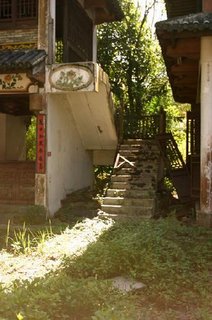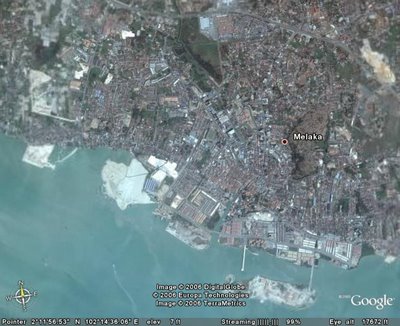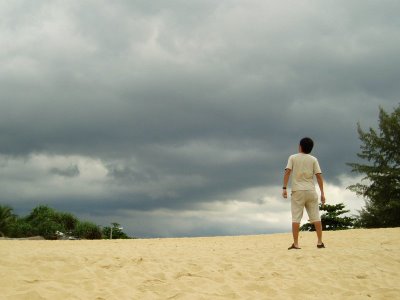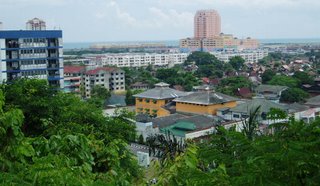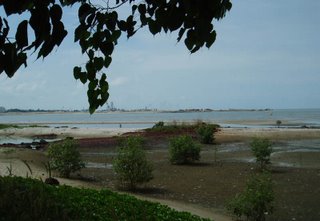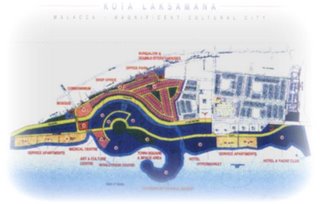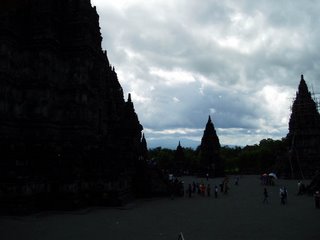Bok House: Refusing to see
Seeing is never even, never universal. You see only as much as what's in your head. Five experts looking at the same seashell will appreciate it differently. Ultimately, seeing requires light.
Here's Dimwit Version 2.0
“It's just a house belonging to a well-to-do man in town having some ornamental set up in the facade as well as on the outside.”
Rais, Rais...
The Bok House was commissioned by rags-to-riches tycoon and philanthropist Chua Cheng Bok; that it is a rich man's house is no doubt true. As for its lack of aesthetic value, and historical significance, as poohed-poohed by Rais, I'll contend that the man and his ministry are legitimately blind.
In April this year, the Badan Warisan Malaysia had presented its points when nominating the Bok House to be gazetted as a national heritage. The text can be downloaded here. Among the merits, it describes the significance of the house in merging neo-classical design with tropical strategies such verandahs and the “selang” in traditional Malay houses. Clearly, it wasn't enough.
The point was wholly missed. See, Rais revealed that the ministry had already decided not to gazette the building in September last year, even before it was nominated, even before the Heritage Act was gazetted on Dec 31, 2005. "Because it did not deem it fit to do so. It's just another building," he said when asked why this was never revealed earlier.
With such prejudice, did the Bok House even stand a chance?
Beneath the layer of a mere “ornamental facade”, the Bok House helped capture a slice of our nation's history during a period of dizzying changes in this land, either from a cultural, socio-economic, and interestingly, technological point of view.
It may well be that the Bok House was one of the first houses in the country to be constructed this way – the reinforced concrete frame – giving rise to the most predominant building method today. Heritage enough?
The Bok House began construction in 1926 and was completed in 1929. Ferroconcrete in this region was very much in its infancy at that time, and likely was applied mainly in institutional buildings under the British administrators. Most buildings then had floors which were constructed of a timber joist system. These floor loads would be anchored to hefty brick loadbearing walls as support. Drop by any shophouse or house built in that period up to 40s and you'll see this fact.
Even globally, ferroconcrete is a relatively new technology, much newer than iron and steel. First attributed to Joseph-Louis Lambot in 1848, it took 45 years before the first ferroconcrete building was constructed in the US (1893). As a growing material science, it became the hot topic of discussion among European architectural critics, scholars and practitioners – maintain the tenets of neoclassical design or break free with avant-gardism? Sigfried Gideon expounded on its potential in his polemical Building in France, Building in Iron, Building in Ferroconcrete. These new technologies gave birth to Modernism.
That the Bok House employed a reinforced concrete structural frame showed a daringness on the client-architect relationship to move forward with the times. It echoed the daringness of the tropical-classical hybrid.
It does make sense. Chua was rich. He engaged the services of one of the region's finest architects – the Singapore-based Swan and McLaren – who had worked on the Raffles Hotel, the Sultan Mosque in Kampung Glam, and the Kuching General Post Office among many others. As a practice, its contribution to the ouevre of the Straits architectural legacy and its myriad styles is immense.
Among its key principals was RAJ Bidwell, who while under the PWD was co-architect of the Secretariat Building (now the Sultan Abdul Samad Building) completed in 1897. It isn't established if Chua knew Bidwell. What's clear is that the firm of Swan and McLaren would have been in touch with the most current building methods, and a progressive client with money to spend would have been drawn to the merits of concrete. A good marriage, you may say.
The success of this early case would have no doubt furthered the application of this structural system in other houses and buildings.
Ken Yeang observes in his book, Architecture in Malaysia:
“By the 1930s a new breed of architects arrived in the Straits Settlements with a different approach learnt in England and Europe. These architects clearly departed from the classical tradition and experimented with the new technology and the aesthetics of Modern architecture. Flat roofs were introduced in accord with the dictates of the Modern Movement. The reinforced concrete frame with brick infill and hollow block floors were introduced and superfluous ornamentation was completely abandoned. Visual interest was created by the unconventional positioning of balconies, sunshading overhangs and staircases.”
The Bok House stood right at the precipice of one of the milestones in Malaysian architecture, the bifurcation of the Modern Movement from the neoclassical. It bore the birthmarks of both cultures, one waxing, the other waning. It carried the genetic material of a tropical architectural expression still recessive in the colonial glamour then. It looked West and East and Inside to a glocal answer.
These are the countless stories – myth, patterns, values – which if only there was light, one would surely see. A light the Minister of Heritage regrettably failed to turn on.




